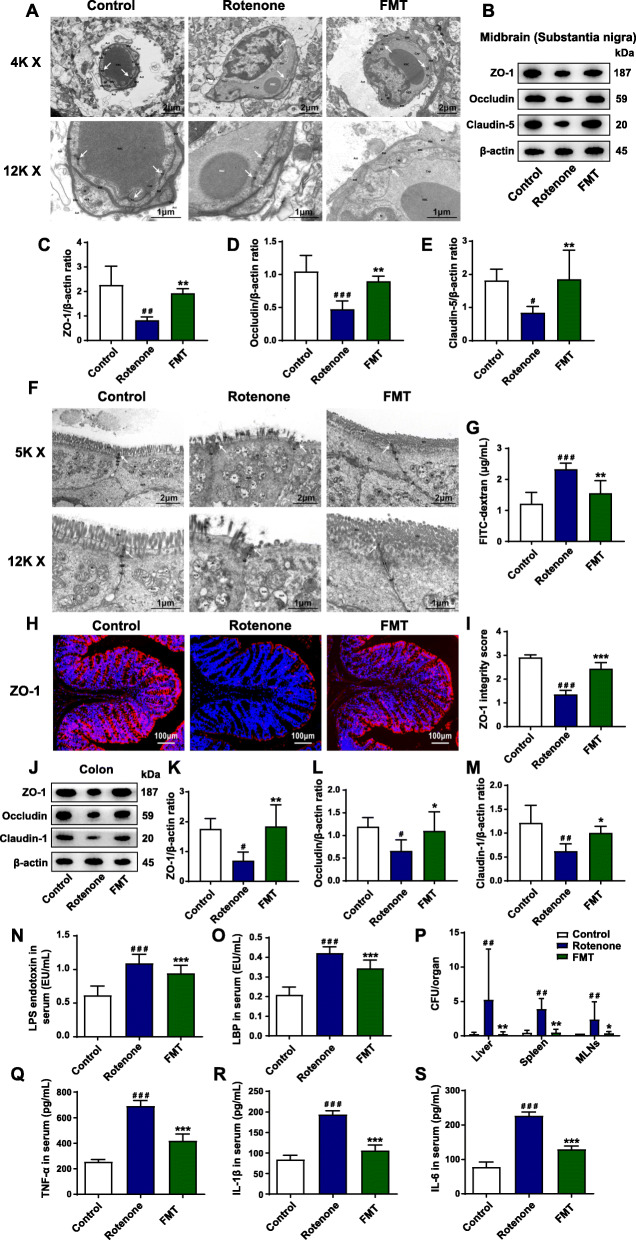Fig. 3.
FMT treatment restores BBB and intestinal barrier impairment in the rotenone-challenged mouse model. A Representative electron micrographs of the tight junction structures of BBB in the SN. B Representative western blot brands of ZO-1, occludin, and claudin-5 in the midbrain containing the SN. C–E The density analysis of ZO-1, occludin, and claudin-5 western blot in the midbrain containing the SN. F Representative electron micrographs of the tight junction structures of intestinal epithelium in the colon. G Concentrations of FD4 in serum indicating intestinal permeability. H Representative captures of immunofluorescence in the colon of ZO-1. I ZO-1 integrity score in the colon. J Representative western blot brands of ZO-1, occludin, and claudin-1 in the colon. K–M The density analysis of ZO-1, occludin, and claudin-1 western blot in the colon. N Serum levels of LPS endotoxin. O Serum levels of LBP. P Numbers of bacteria (CFU) in the livers, spleens, and MLNs of mice. Q–S Serum levels of inflammatory cytokines, including TNF-α (Q), IL-1β (R), and IL-6 (S). For C–E and K–M, n = 4 for each group. For G, n = 5 for each group. For I, n = 5 for each group. For N and O and Q–S, n = 8 for each group. For P, n = 6 for each group. Data are presented as mean ± SD. #P < 0.05, ##P < 0.01, ###P < 0.001 versus the control group; *P < 0.05, **P < 0.01, ***P < 0.001 versus the rotenone group

